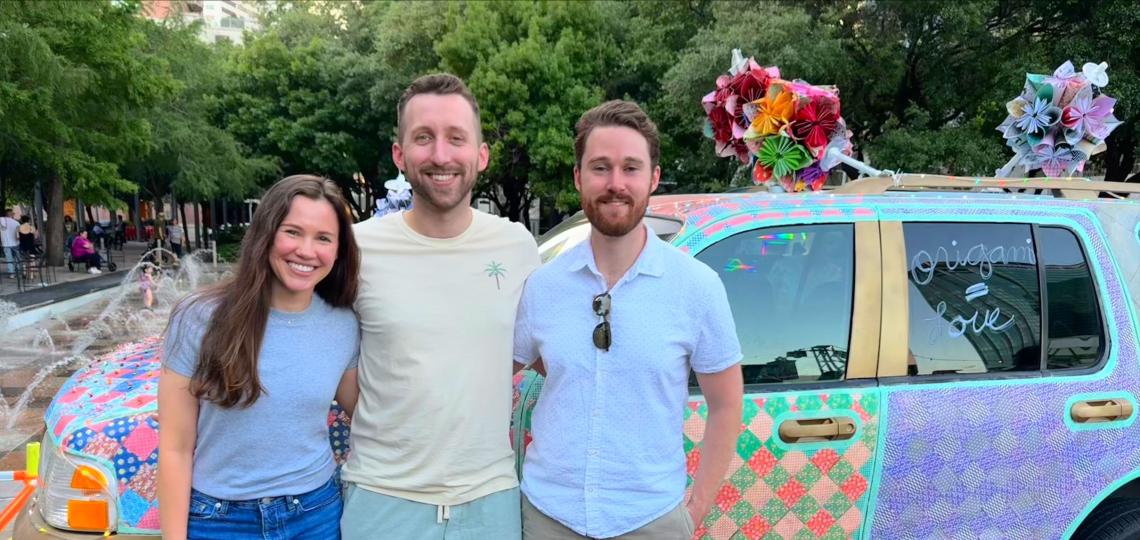
Welcome to Baylor Anesthesiology, proudly based in the world-renowned Texas Medical Center (TMC) in Houston, Texas. As part of the largest and most diverse medical complex in the world, our residency program spans seven premier clinical sites, offering exposure to a wide range of patient populations, surgical complexities, and perioperative challenges.
Your journey begins at Ben Taub Hospital, a Level 1 trauma center and safety-net hospital that sets the tone for our commitment to service and excellence. Here, you'll care for some of Houston’s most complex and vulnerable patients while mastering the fundamentals of trauma, cardiac, neuro, obstetric, and general anesthesia.
Across Brays Bayou, the Michael E. DeBakey Veterans Affairs Medical Center (VAMC) offers an entirely different, yet equally rewarding, environment. As the second-largest VA hospital in the country, it’s where residents gain experience in interventional pain management and provide anesthetics for a medically complex veteran population in more than 20 active ORs and procedural areas—serving those who’ve served our country.
The Texas Heart Institute at Baylor College of Medicine combines a legacy of innovation with high-acuity training in cardiovascular and transplant anesthesia. Residents gain hands-on experience with complex cases, including TAVRs, CABGs, and solid organ transplants (heart, liver, lung, kidney), as well as advanced robotic cardiac procedures. Rotations here also provide integrated ICU exposure, with a focus on perioperative critical care and the management of patients requiring mechanical circulatory support such as VADs, ECMO, and related technologies.
Texas Children’s Hospital provides comprehensive exposure to high-complexity pediatric anesthesia in one of the nation’s top-ranked children’s hospitals. You’ll help neonates, infants, and children undergo both routine procedures and highly specialized surgeries. Clinical experience includes anesthetic management of patients with rare congenital, genetic, and metabolic disorders presenting for interventions such as single-ventricle palliation, scoliosis correction, and craniofacial reconstruction. An elective in pediatric regional anesthesia at Texas Children’s West Campus offers additional subspecialty experience with neuraxial and peripheral nerve blocks in a close-knit, community-oriented setting.
At Baylor St. Luke’s Medical Center, you’ll focus on neuroanesthesia with exposure to a wide spectrum of intracranial procedures, including craniotomies, aneurysm clippings, and endovascular interventions. Here, residents refine their precision, workflow optimization, and adaptability in a private practice environment.
MD Anderson Cancer Center, a world leader in cancer care, offers subspecialty training with rotations in acute pain, neuroanesthesia, and critical care medicine. Residents develop advanced regional anesthesia skills and gain experience in multimodal analgesia for patients with chronic and cancer-related pain. The neuroanesthesia rotation includes awake craniotomies and resections of complex intracranial tumors, while the SICU rotation focuses on high-acuity perioperative management in immunocompromised and oncologically fragile populations.
Beyond the OR, you’ll have protected time for didactics and simulation. Our residents consistently excel in in-training and board exams, and benefit from unparalleled professional development opportunities through our location in the TMC. Whether your interests lie in quality improvement, education, or research, you’ll find mentorship and resources to help you grow—and support to present your work nationally. Equally important, you’ll be part of a collegial and supportive community that’s invested in your success—both professionally and personally.
Living in Houston, one of the nation’s most vibrant, diverse, and affordable cities, only enhances your residency experience. With easy access to live music, world-class museums, expansive parks, the renowned Houston Zoo, and a legendary food scene, there’s always something new to explore. No matter where you're from, Houston offers a sense of belonging—and we have no doubt that you'll feel right at home.
We invite you to discover how training at Baylor College of Medicine, and living in the dynamic city of Houston, will provide an exceptional foundation for your future in anesthesiology.
Kayli, Charlie, and Connor








